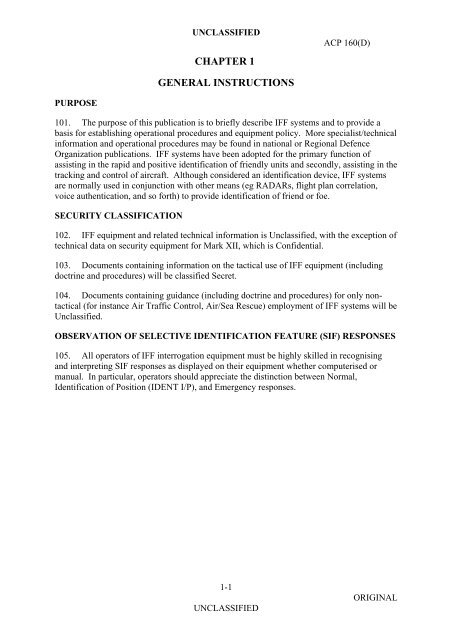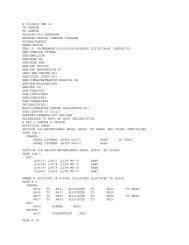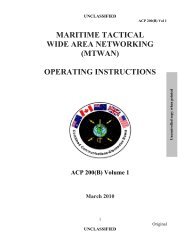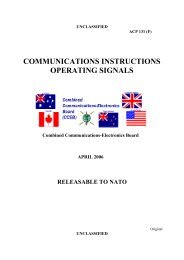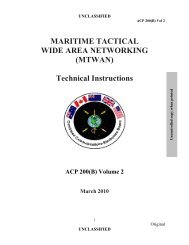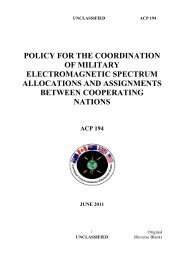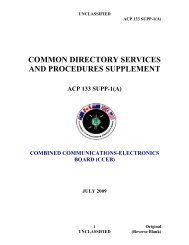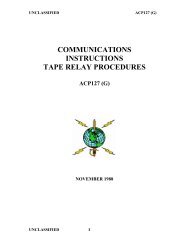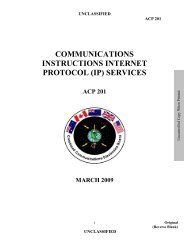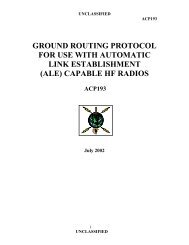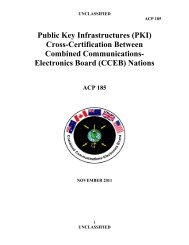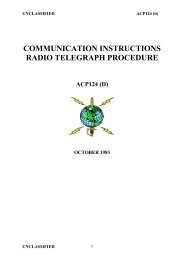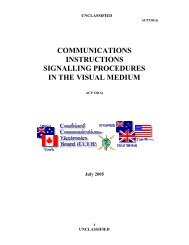IFF/SIF OPERATIONAL PROCEDURES
IFF/SIF OPERATIONAL PROCEDURES
IFF/SIF OPERATIONAL PROCEDURES
Create successful ePaper yourself
Turn your PDF publications into a flip-book with our unique Google optimized e-Paper software.
PURPOSE<br />
UNCLAS<strong>SIF</strong>IED<br />
CHAPTER 1<br />
GENERAL INSTRUCTIONS<br />
1-1<br />
UNCLAS<strong>SIF</strong>IED<br />
ACP 160(D)<br />
101. The purpose of this publication is to briefly describe <strong>IFF</strong> systems and to provide a<br />
basis for establishing operational procedures and equipment policy. More specialist/technical<br />
information and operational procedures may be found in national or Regional Defence<br />
Organization publications. <strong>IFF</strong> systems have been adopted for the primary function of<br />
assisting in the rapid and positive identification of friendly units and secondly, assisting in the<br />
tracking and control of aircraft. Although considered an identification device, <strong>IFF</strong> systems<br />
are normally used in conjunction with other means (eg RADARs, flight plan correlation,<br />
voice authentication, and so forth) to provide identification of friend or foe.<br />
SECURITY CLAS<strong>SIF</strong>ICATION<br />
102. <strong>IFF</strong> equipment and related technical information is Unclassified, with the exception of<br />
technical data on security equipment for Mark XII, which is Confidential.<br />
103. Documents containing information on the tactical use of <strong>IFF</strong> equipment (including<br />
doctrine and procedures) will be classified Secret.<br />
104. Documents containing guidance (including doctrine and procedures) for only nontactical<br />
(for instance Air Traffic Control, Air/Sea Rescue) employment of <strong>IFF</strong> systems will be<br />
Unclassified.<br />
OBSERVATION OF SELECTIVE IDENTIFICATION FEATURE (<strong>SIF</strong>) RESPONSES<br />
105. All operators of <strong>IFF</strong> interrogation equipment must be highly skilled in recognising<br />
and interpreting <strong>SIF</strong> responses as displayed on their equipment whether computerised or<br />
manual. In particular, operators should appreciate the distinction between Normal,<br />
Identification of Position (IDENT I/P), and Emergency responses.<br />
ORIGINAL


